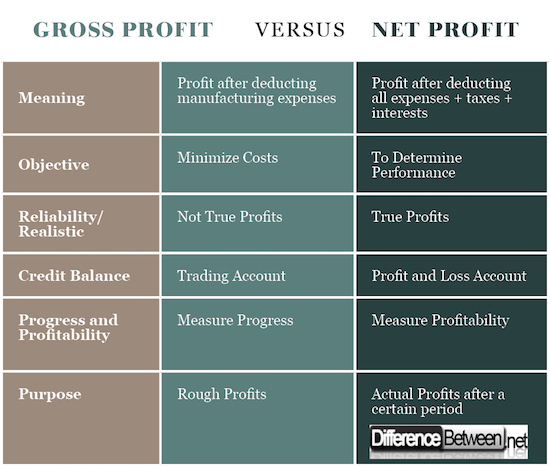Content

Boeing’s is the world’s largest and longest twin-engine commercial aircraft. Once it goes into service, the 251-foot-long aircraft will ferry up to 425 passengers on long-haul flights—spanning up to 7,285 nautical miles—around the world. Each of the Boeing 777-9’s wings (complete with retractable wingtips) are the “largest single composite structure in the world,” according to a report from CNN. McDonnell Douglas MD-11 was built between 1990 and 2000 as a trijet commercial aircraft. With an MTOW of 286 tonnes, it could accommodate 410 passengers in its unique three-class configuration and fly up to 7,144 nautical miles without refueling. Powered by three advanced engines, MD-11 had a wingspan of approximately 169 Ft.
The plane measures 321 feet and 10 inches (70.66 meters) in length, 63 feet and six inches (19.40 meters) in height, and has a wingspan of 211 feet and five inches (64.44 meters). The plane has a length of 242 feet and four inches (73.9 meters), a height of 60 feet and eight inches (18.5 meters), and a wingspan 21 feet and five inches (64.75 meters). The plane has an overall length of 247 meters and three inches (75.36 meters), a height of 58 feet and 10 inches (17.93 meters), and a wingspan of 208 feet and two inches (63.45 meters). The plane has an overall length of 219 feet and two inches (66.8 meters), a height of 55 feet and 11 inches (17.05 meters), and a wingspan of 212 feet and five inches (64.75 meters).
Boeing has aimed the 777x line at airlines like Emirates and Nippon who have been some of Airbus’s most reliable customers. These are some of the biggest aircraft that Boeing has ever put out there. That brings Boeing back into competition with some of the biggest planes made by Boeing’s major competitor Airbus. At just over 75 meters long, it is bigger than both the A380 and the An-124. It can carry a payload of 127 tonnes and adds inflight refueling for a huge range. It remains in active service with the US Air Force, although several large transport planes have followed it.
Airways Newsletter
Various aerospace companies have produced over 50 different and unique commercial aircraft prototypes to date. Many aircraft have taken off for the last time, and some have just been recently retired, such as the McDonnell Douglas MD-90 (172 seats) and the Fokker F28 Fellowship (85 seats). At number five, we have the Airbus A340, a long-range, wide-body airliner. Its early variant is propelled by CFM56s with 138.78–151.24 kN (31,200–34,000 lbf) while later variants are powered by the RR Trent 500 engine, giving 248.12–275.35 kN (55,780–61,902 lbf) thrust. At the ninth spot, we have the Boeing 767, a twin-aisle jet aircraft designed and built by Boeing.
- Beluga XL is one of the most outstanding achievements of Airbus’s production process.
- To give you an idea of the size of this steel giant, the cabin of the A380 is 40% larger than that of the Boeing 747, the second largest plane in the world.
- At the ninth spot, we have the Boeing 767, a twin-aisle jet aircraft designed and built by Boeing.
- The plane has a length of 250 feet and two inches (76.3 meters), a height of 63 feet and six inches (19.4 meters), and a wingspan of 224 feet and five inches (68.4 meters).
Airbus and Boeing, the global aviation giants, design the large planes ever envisioned by humanity. Aviation innovators include sophisticated safety features to safeguard crew and passengers. Some key features include complex flight control, advanced sensors, and several redundant systems. The idea that engineers have built machines of this size that can harness the laws of physics is simply awe inspiring and continues to mezmerize aviation enthusiasts around the world. In addition, the shipping kit includes a blanket, small pillow, earphones, compact toothbrush and toothpaste. The legroom is good (we always consider it good when measuring by Paulo, who is 1.90 meters tall) and the seats are comfortable.
Take a look at 10 of the world’s largest passenger planes, from the Boeing 747-400 to the Airbus A380-800
Learn what military time is and how it works in this informative article. As we head to the end of our list, let’s take a close look at another Airbus plane. The Airbus A380 was to go head-to-head with the Boeing 747, but Airbus Very Large Aircraft (VLA) data proved otherwise. The European manufacturer received six times fewer orders for its A380s compared to those for the Boeing 747s. The last Boeing 747 delivery to Atlas Air (5Y) took place on January 31, 2023.

It has a maximum capacity of 660 and typical seating between three classes (first, business, and economy) of 416. It has a maximum seating of 440, with typical seating between three classes (first, business, and economy) of 270 to 310. Airbus continues to make some of the most efficient aircraft in the skies today and this isn’t the last time we will see one of their planes on this list. There are plenty of different ways to measure “biggest” when it comes to aircraft. It’s no surprise to see another Airbus aircraft making the list as the company has been innovating new ways to achieve staggering size in flight.
However, their competitor, Airbus, is busy creating some of the most impressive aircraft in the skies today. When it comes to the biggest planes in the sky, there might be some that can eclipse its size, but no aircraft has a bigger legacy. Nearly 15 years after this aircraft took its first flight, the last Airbus A380 order will be assembled for 2021 (17 planes for Emirates and All Nippon Airways) and then the production will stop. There have been delays to the program, most notably following the death of its founder Paul Allen in 2018. The new owner, Cerberus Capital Management, decided to shift the role of the aircraft to be a launch vehicle for reusable hypersonic flight research vehicles.
HYBRID AIR VEHICLES AIRLANDER 10 AIRSHIP
Ukraine’s freight specialist Antonov Airlines still flies four units, and UAE-based Maximus Air Cargo has one. If we compare existing passenger jets with cargo jets, the latter are larger and heavier. A few to name are the Stratolaunch, the Hughes H-4 Hercules, the Antonov An-225 Mriya (destroyed in the Russia-Ukraine war), the Boeing Dreamlifter, and the Airbus Beluga XL.
At this point, the importance of the aviation sector in the field of trade and logistics can be clearly seen. As the volume of international trade expands, highways are no longer a practical option and companies look for more flexible, faster, and more useful options. The growing and expanding high-tech aircraft is the first of these options. Ultimately, the spaciousness and quiet cabin explain why passengers and pilots prefer this large model.
While Airbus is striving to constantly break the barriers of size and efficiency, Boeing is always ready to add another aircraft to this list. This plane has a maximum take off weight of 280-tonnes and a 64.75-meter wingspan. Boeing is still one of the most popular names in gigantic passenger aircraft. The last 747s were delivered in 2020 as the aviation industry has grown over the decades.
- At this point, the importance of the aviation sector in the field of trade and logistics can be clearly seen.
- But the sheer size and versatility of this freighter have led to a long service life.
- A surviving engineering triumph of the Soviets, the An-124 continues to fly airlifting missions for Russia.
- For a decade it was the longest airliner in the world, before being succeeded by the Boeing 777X.
- Lufthansa (LHAB) (LHA) was the first airline to order the in 2006, followed by Korean Air and Air China.
It has a passenger capacity that ranges from 250 to 440, depending on the seat configuration chosen by the airline. Some of its main users include Turkish Airlines, Air China, China Eastern Airlines (CIAH) (CEA), China Southern Airlines (ZNH), and Cathay Pacific. The World’s largest commercial passenger jet is the Airbus 380 (A380), nicknamed the ‘Super Jumbo’ which can carry a maximum of 853 passengers. However, in reality, it is rarely configured to hold more than 500 passengers due to the inclusion of Business and First Class taking up more cabin space. The Airbus A380 is the largest commercial passenger plane in the world and can accommodate between 525 and 853 passengers. The Boeing 747, by contrast, can accommodate between 467 and 605 passengers.
Biggest Airplanes Across the Globe World’s 5 Largest Aircraft
It has a maximum seating of 440 and a typical seating capacity between three classes of 250 to 290. This list ranks today’s largest passenger aircraft based on their typical three-seat configurations biggest commercial aircraft to give a realistic portrayal of what these impressive aircraft are capable of. The Hughes H-4 Hercules was one of the largest aircraft ever built but never moved beyond the one prototype version.

For comparison, Boeing’s Dreamlifter comes in behind at 1,840 cubic meters. Joe Sutter led a group of almost 4,500 engineers who developed the aircraft. His grandson was present at the final delivery event and recounted to Simple Flying that all the grandchildren would spend time with grandpa and that meant always being around planes. Charles Trippe, the grandson of Pan Am founder Juan Trippe was also present, carrying a flag with the Pan Am logo at the beginning of the event.
The first wide-body twinjet developed by Boeing can be powered by three turbofan options. Customers can choose between General Electric (GE) CF6, Rolls-Royce (RR) RB211, or Pratt & Whitney (P&W) JT9D turbofans to get propulsive forces ranging from 48,000–60,600 lbf (214–270 kN). With the help of technology and R&D, we have arrived at a point where making big is no longer the primary concern, but safety is, and this has been well addressed by the world’s largest aerospace companies. From having the world’s largest factory to building mega aircraft in days, the aviation industry has come a long way and is still pushing the envelope. The presence of An-225 in commercial cargo transportation missions affirms its sterling legacy in bulky payload aviation services. Boeing is better than Boeing 747 and other earlier versions because of fuel efficiency and improved technology.
This plane has a 159,000-liter fuel capacity to manage that kind of power. Unlike the other passenger aircraft on this list, the 777X is a twin-engine aircraft. And these new GE9X engines are the largest and most powerful commercial engines ever built – larger than a 737’s fuselage! The 777X will bring a new era of very high-capacity, very efficient twins. We are unlikely to see larger four-engine commercial jets again for some time.
After more than 100 years, we have aircraft carrying more than 800 passengers at a time. It can be expected that low costs company’s will buy in future used A380’s and than fill it with more than 800 passengers. He shared that InJourney will focus on shifting the airport experience for passengers from being too strictly operational to being focused more on service and enjoyment.

The aircraft is being phased out of airlines in favor of single-aisle designs that can now fly with enough range to cross the oceans. But as the only U.S. mass-manufactured four-engine jumbo jet, the Boeing 747 has some years in it yet. It has a maximum capacity of 550 passengers and typical seating between two classes (business and economy) of 396. It can handle some of the most demanding journeys without refueling and with a maximum passenger capacity. This aircraft is capable of taking on the Singapore to New York flight in one 18 hour trip.
Airbus A340-300
With each of Trent XWB capable of producing thrusts of 84,200 lbf/374.5 kN for -900 and 97,000 lbf/431.5 kN for the variant. The criteria used to select the largest aircraft varies according to size, capacity, weight, and other parameters. For this article, we have used the maximum seating capacity of the aircraft. Read through to learn why the innovative giants of the aviation industry need applause. Moreover, you will appreciate the revolution of different aircraft categories, including experimental models, military planes, and big passenger jets.
It is a strategic airlift that’s best suited for heavy and bulky troops, supplies, and equipment for the long haul. Therefore, it is preferred for critical national and overseas military operations. In addition, the MD-11 had three engines, two wing-mounted and one tail-mounted. It featured advanced features like a fly-by-wire control system and advanced engineering technologies to make the flight more stable and powerful. In essence, it has eased the transportation of fuselage and wing components from one production site to another. All these capabilities come from the superior design, thanks to the great innovators who have refined the Airbus production process.
